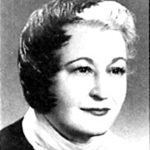 Medical bioethics
Medical bioethics

The moral side of human activity in medicine is studied by medical bioethics (or biomedical ethics). The concept of "ethics" means the doctrine of morality and ethics, their meaning and purpose.
The term "bioethics" (ethics of life) was introduced into everyday life in 1969 by the American biochemist and oncologist V.R. Potter. An outstanding doctor and scientist designated by this term the ethical problems of mankind associated with the existing and probable danger to its survival in the modern Potter world. And the connection between ethics and medicine has existed for thousands of years.
In the activities of medical workers, the principles of medical ethics and deontology . On the basis of customs, norms and rules of behavior, the most general ethical categories (moral norms) are formulated:
- duty;
- honor;
- conscience;
- dignity.
A patient who trusts his health to a nurse wants and must be sure not only of professional skills, but also of her following high moral and moral principles. A nurse should be decent and honest, sensitive and kind, merciful and sympathetic.
The moral basis, standard and standard of behavior of nurses is "Ethical code of nurses in Russia".
Moral duty is a category of morality, it should not be confused with the science of duty - deontology, which has a narrower content.
Medical debt, medical debt is a set of requirements and norms that regulate relations:
- doctor (medical worker) - patient
- doctor (medical worker) - relatives of the patient;
- doctor - doctor;
- doctor - nurse;
- doctor (medical worker) - society.
On the one hand, professional duty is a manifestation of humanism as the main principle of medical (medical) morality. On the other hand, it happens that humanism is opposed to medical duty. It is known that the refusal to provide medical care is contrary to the Hippocratic Oath, the Geneva Declaration, the Criminal Code, but such facts often occur.
Medical bioethics also performs the function of protecting a medical worker as an individual, allowing a physician to act not only according to existing laws, but also according to his own conscience in the performance of his professional duty.
Currently, medical bioethics exists in four models (forms):
- Hippocratic model . The basic principle is “do no harm”. The origins of medical ethics are contained in the Hippocratic Oath, which is still relevant today and which guides this model.
- Paracelsus model . The basic principle is "do good". The whole treatment process is based on building a positive emotional contact with the patient.
- deontological model. Medical ethics, the author is Petrov. The main principle is “moral impeccability and observance of duty”. It is based on the strictest implementation of the "code of honor" established by the medical community and the doctor's own mind.
- Bioethics is a modern model of biomedical ethics. The main principle is “respect for human rights and dignity”. Philosophical knowledge in interaction with scientific, technical and technological, informational and genetic achievements of modern medicine. All measures are aimed at preserving and maintaining the life of the patient.
Modern medical bioethics is faced with many controversial issues: abortion, artificial insemination, cloning, sexology, euthanasia. In these cases, a so-called conflict of rights arises. For example, the right of the fetus to life and the right of a woman to terminate a pregnancy.
The task of modern medicine is to make a person's life long and happy, without illness and suffering. However, people who are obsessed with a thirst for power, profit and exclusively their own interests often stand in the way of goodness and progress. This was the reason for the emergence of such a form of medical ethics as bioethics, which considers medicine in the context of human rights.





